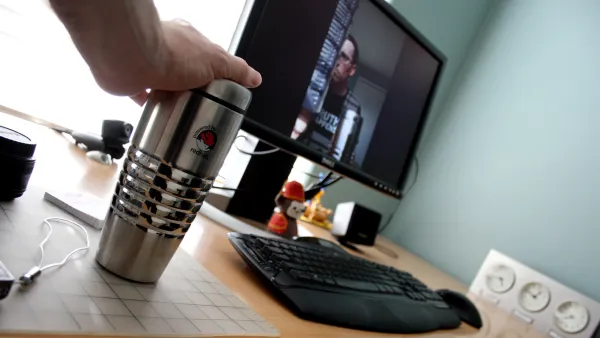Jeff Khau examines the rise in the teleworking population and what this demographic shift means for cities.
Around the world, teleworking, or telecommuting, is seeing an increase in popularity as more people choose to work from home. European and American policy has followed suit, crafting regulations to protect teleworkers' rights and encourage more "work-at-home" employees.
Khau reports that statistics from the American Community Survey have confirmed an increase of the teleworking population in the US, stating that it "grew 61% between 2005 and 2009." According to the study, the greatest increase was among federal government staff, followed by municipal state workers.
These findings could be highly influential for agencies and businesses looking to cut administrative costs, argues Khau. There are a few kinks to work out in the research, however, such as distinguishing part-time and full-time hours and the relationship between teleworking and employee productivity levels.
With a growing population punching in on their laptops, shifts in urban development catering to this demographic are beginning to take place in the form of shared office spaces like BLANKSPACES and Liquidspace. These new services encourage a social atmosphere for teleworkers so that those who work remotely are still very much connected to their community.
FULL STORY: The Rise of Telework and What it Means

National Parks Layoffs Will Cause Communities to Lose Billions
Thousands of essential park workers were laid off this week, just before the busy spring break season.

Retro-silient?: America’s First “Eco-burb,” The Woodlands Turns 50
A master-planned community north of Houston offers lessons on green infrastructure and resilient design, but falls short of its founder’s lofty affordability and walkability goals.

Delivering for America Plan Will Downgrade Mail Service in at Least 49.5 Percent of Zip Codes
Republican and Democrat lawmakers criticize the plan for its disproportionate negative impact on rural communities.

Test News Post 1
This is a summary

Test News Headline 46
Test for the image on the front page.

Balancing Bombs and Butterflies: How the National Guard Protects a Rare Species
The National Guard at Fort Indiantown Gap uses GIS technology and land management strategies to balance military training with conservation efforts, ensuring the survival of the rare eastern regal fritillary butterfly.
Urban Design for Planners 1: Software Tools
This six-course series explores essential urban design concepts using open source software and equips planners with the tools they need to participate fully in the urban design process.
Planning for Universal Design
Learn the tools for implementing Universal Design in planning regulations.
EMC Planning Group, Inc.
Planetizen
Planetizen
Mpact (formerly Rail~Volution)
Great Falls Development Authority, Inc.
HUDs Office of Policy Development and Research
NYU Wagner Graduate School of Public Service





























